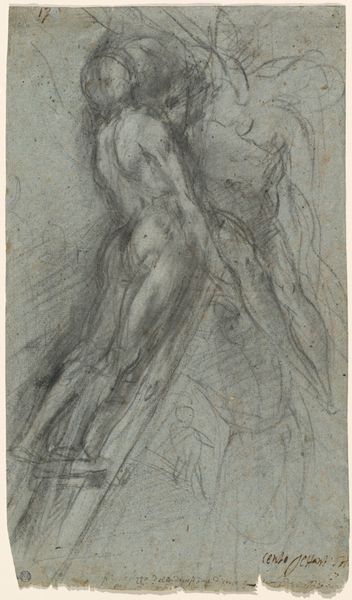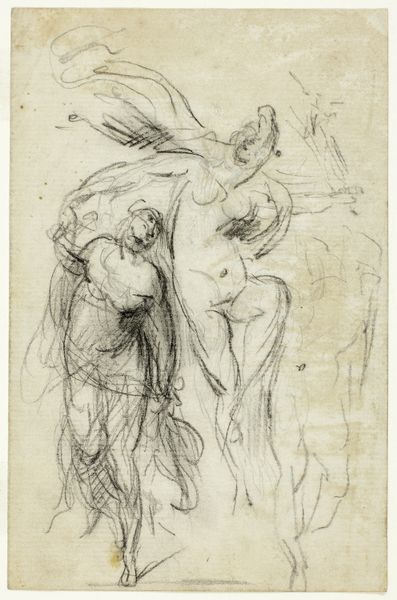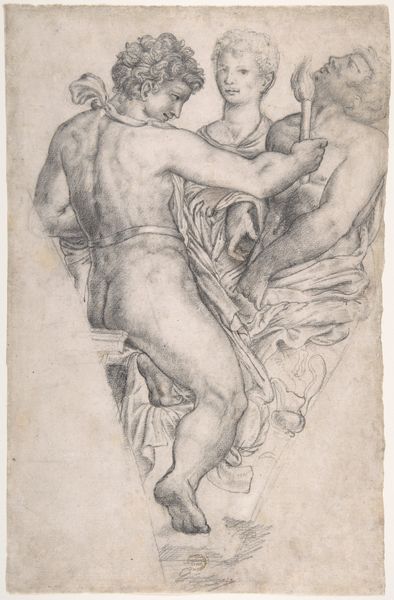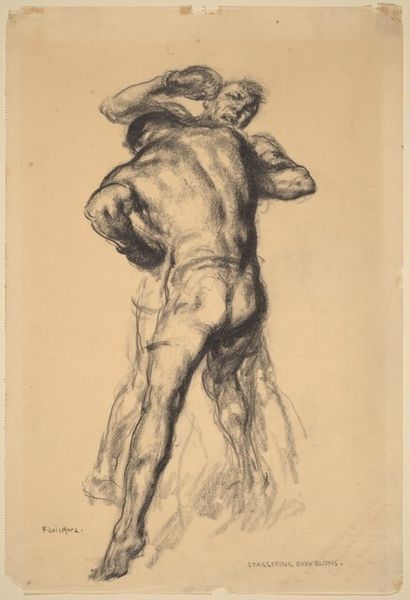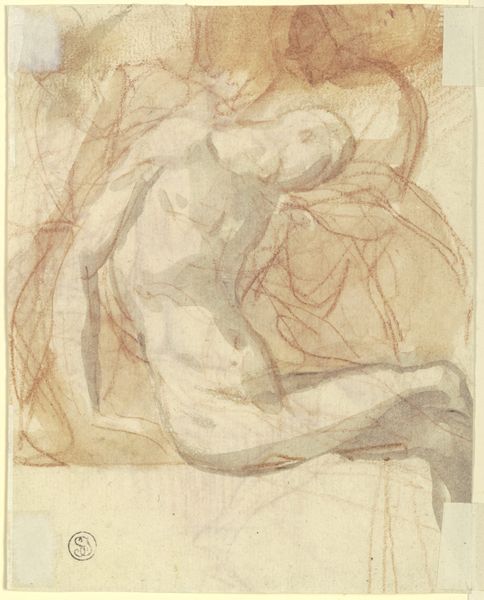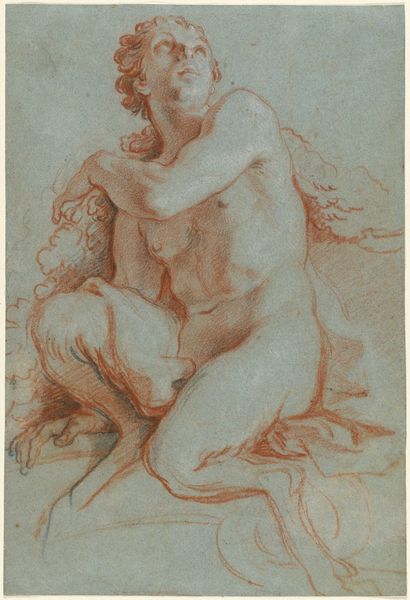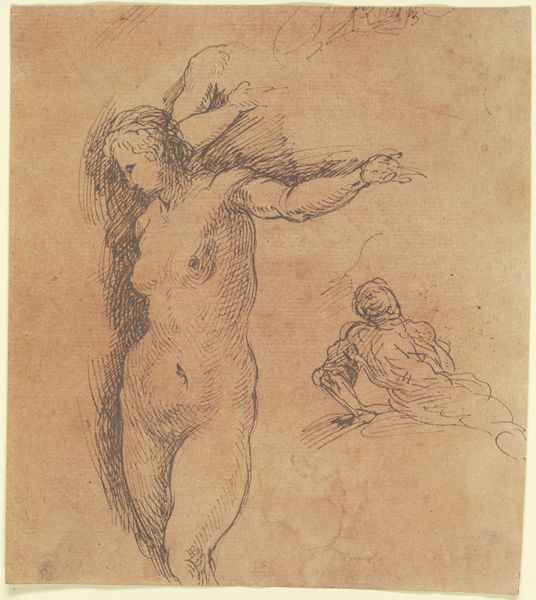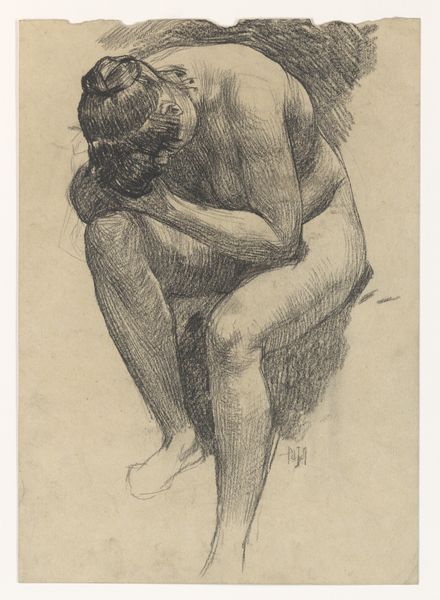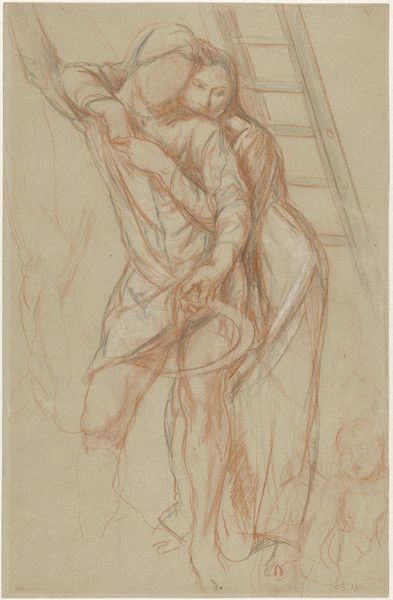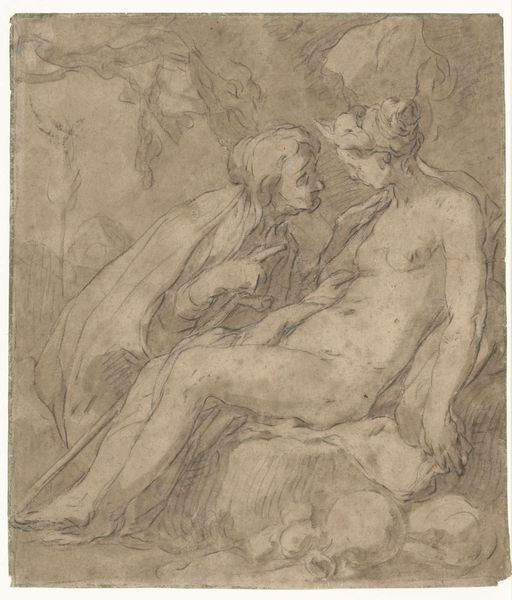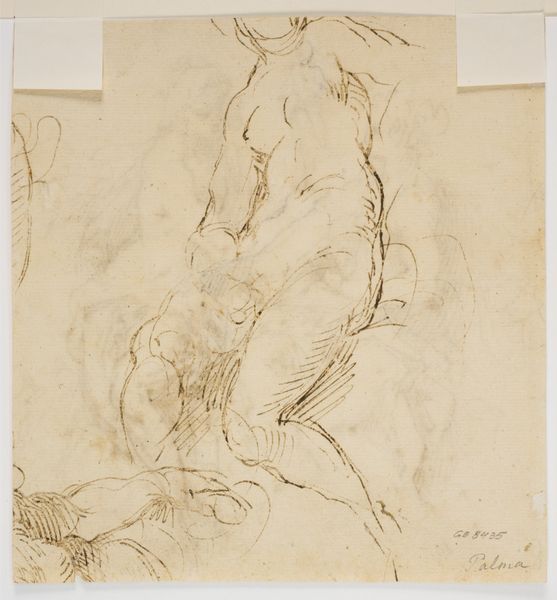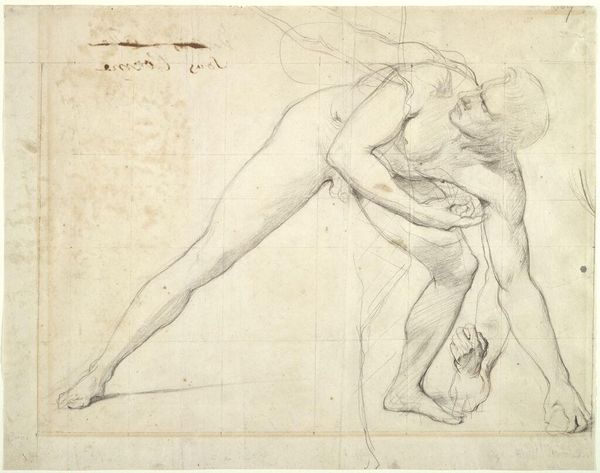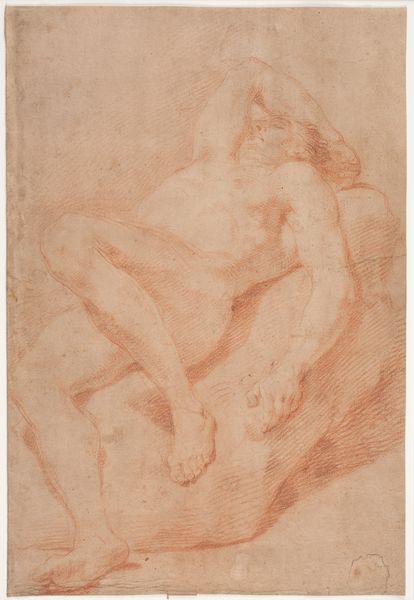
Dimensions: 152 mm (height) x 123 mm (width) (bladmaal)
Curator: Oh, my! Look at this. This piece, "To elskende" which translates to "Two Lovers," is attributed to Auguste Rodin and thought to have been created sometime between 1878 and 1881. The Statens Museum for Kunst holds this beautiful drawing crafted with charcoal and pencil. What strikes you initially? Editor: A fever dream. I feel like I’ve walked in on something incredibly private, and also deeply unresolved. The frenetic lines give it this raw, almost desperate energy. Curator: Yes! The way he captures the embrace, it’s not just physical, is it? The intertwining lines that don't describe the human body speak to a deep emotional enmeshment, like thoughts or feelings swirling around the figures. Notice, for example, the lack of discernible background; it draws all the focus to their connection. Editor: Absolutely. Those spiraling lines, to me, evoke the chaotic, consuming nature of passionate love. They almost seem to suffocate the figures, but they're clearly reveling in that suffocation. The Romantic undertones are inescapable. And the erotic-art aspect comes forward... It's vulnerable but intensely intimate. It's not idealized beauty; it’s a messy, real connection laid bare. Curator: Rodin was exploring very personal themes here. The intensity with which they embrace and the swirling charcoal lines certainly reflect some of the emotional turbulence in Rodin's own complicated love life. Perhaps most memorably, his tempestuous and decades-long relationship with the sculptress Camille Claudel. The symbolism is dense, it transcends just erotic-art, no? Editor: Definitely, but consider that these symbols change depending on who is looking and feeling. Ultimately, for me, the drawing embodies the raw, untamed aspect of human desire and speaks about something we share—it has to. We’ve all known some form of embrace. Curator: So true. A glimpse into a timeless tableau of desire and human connection, even rendered in fragmented lines and shadows. A treasure. Editor: A poignant exploration of intimacy, beautifully rendered, open for each one of us to feel our own embrace.
Comments
No comments
Be the first to comment and join the conversation on the ultimate creative platform.
